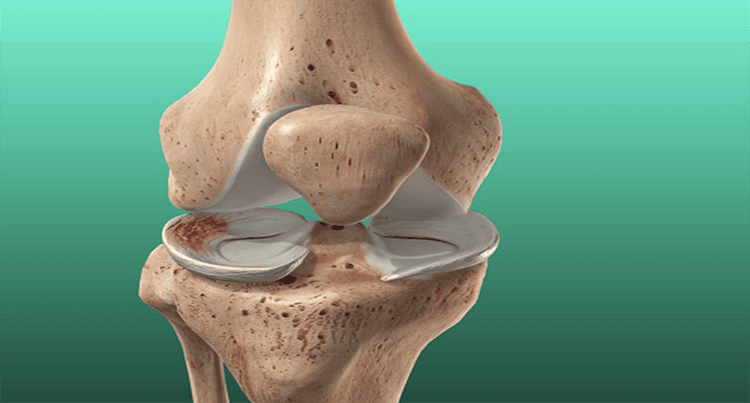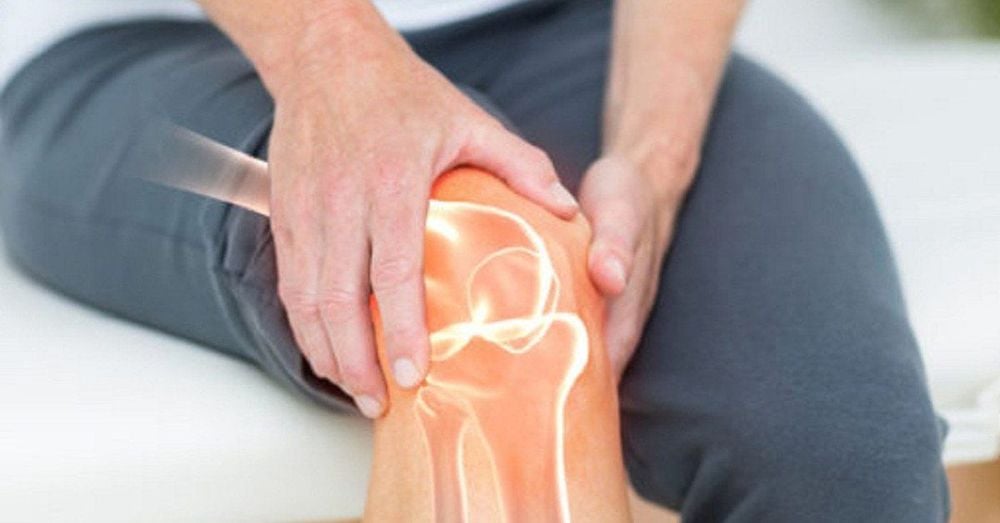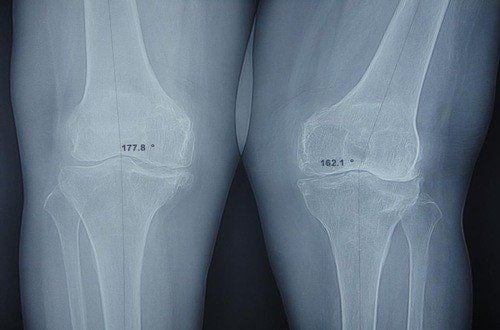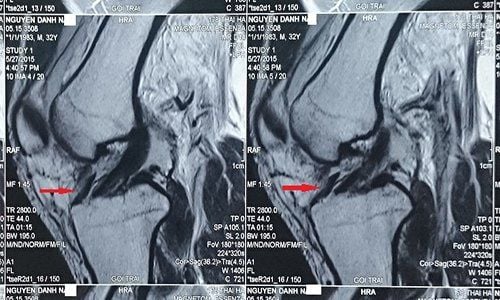This is an automatically translated article.
The article is professionally consulted by Master, Doctor Nguyen Quang Duc - Radiologist - Department of Diagnostic Imaging and Nuclear Medicine - Vinmec Times City International General Hospital.
Discoid meniscus is a variant of the abnormal meniscus common in children. A detailed history of arthritic symptoms and physical examination combined with MRI of the knee make the diagnosis of disc meniscus more effective in cases with clinical manifestations ranging from no symptoms to pain. severe knee pain and swelling.
1. What is disc-shaped meniscus?
Meniscus are two crescent-shaped structures in the knee that act as shock absorbers between the femur and tibia through stress dissipation and compressive load dispersion. This is a fibrocartilage structure mainly composed of type I collagen. The functions of meniscus include force transmission, joint strength and structural stabilization of the knee during movement. The medial meniscus is usually C-shaped and in close contact with the surrounding joint capsule. The side meniscus has a more rounded shape and better portability.
The disc-shaped meniscus is an anatomical variation of the normal crescent-shaped meniscus. These variants are often more prone to injury than the normally shaped meniscus. When a person has a discoid meniscus, the knee joint can often lead to pain and a popping sensation inside the knee, often referred to as “pop-knee syndrome.” From there, the movement function of the joint will be affected and require intervention. Management in these situations involves observation and repair of the meniscus based on the patient's appearance and presentation.
The cause of the disc-shaped meniscus has always been considered congenital. Histological examination of a disc-shaped meniscus showed impaired collagen fibers, disorganization, and degeneration compared with normal meniscus. Furthermore, increased meniscal thickness and abnormal angiogenesis increase the risk of meniscal tears based on the mechanism of repetitive microtrauma during vigorous exercise or even during birth. daily activity.

2. What are the manifestations of disc-shaped meniscus?
The most symptomatic discoid meniscus is knee pain with or without mechanical symptoms.
Pain is not always present but is more common with activity and can be associated with pain with limited range of motion and joint effusion.
The onset of symptoms may be after an injury or a vigorous, repetitive exercise on the knee joint. Accordingly, if the disc-shaped meniscus is symptomatic, the patient will often present very early, even in adolescence.
Once the meniscus tear is displaced, the patient's ability to fully extend the knee may be impaired.
At this point, a comprehensive examination of the knee should be performed, including visual inspection, range of motion, neurovascular assessment, ligament stability testing, and specific testing maneuvers. specifically for meniscus. The chiropractor will perform specific examinations specific to meniscus disease, including palpating the midline or lateral joint to assess pain, the McMurray test, the Apley compression test, and the Thessaly test.

3. What is the medical diagnosis of disc meniscus?
3.1. Conventional X-ray
Patients with disc-shaped meniscus usually show normal plain radiographic findings of the knee but may also have subtle indirect findings. Therefore, radiographs are considered as the first modality to help diagnose disc-shaped meniscus abnormalities.
Indirect signs of disc meniscus include enlargement of the joint space, tibial plateau, tibial hypoplasia, capsular elevation.

3.2. Magnetic resonance imaging
Magnetic resonance imaging (MRI) of the knee joint is an important diagnostic tool adjunct to the clinical features of disc meniscus. This is a useful modality for diagnosing and evaluating the characteristics of the cartilage layer and if there is any damage.
Suggested radiographic criteria for disc meniscus include the ratio of the minimum meniscus width to the maximum tibial plateau width in the superior trunk plane 20% and the ratio between the total widths of both horns. lateral meniscus diameters of more than 75% in the crest plane to accurately diagnose disc meniscus on MRI.
Joint MRI can also provide information on cartilage, meniscal tears, and the presence of associated osteomyelitis. MRI findings such as alteration of the signal in the cartilage and edema have been identified as indirect signs of meniscal tears in symptomatic patients with discoid meniscus. Facet deformities, such as abnormal flexion or buckling and displacement, are valuable markers for peripheral detachment of the traumatic cartilage.
At this point, the information on the MRI is used to provide the basis for surgical planning related to the direction of displacement and repair of the cartilage layer into the correct anatomical structure.

3.3 Arthroscopy
Arthroscopy may be needed to confirm the diagnosis of discoid meniscus in symptomatic patients when not evident on MRI.
4. How to treat disc meniscus?
Surgical treatment is indicated for symptomatic disc-shaped meniscus cases causing pain and/or mechanical symptoms.
Typically, patients with symptomatic disc meniscus are treated with arthroscopic partial meniscalectomy, which is a procedure that reshapes the meniscus into a more anatomically correct crescent shape to enhance joint function. It is important that during manipulation, it is necessary to preserve the peripheral rim to maintain the stability of the joint surface in the long run.
In contrast, if a disc-shaped meniscus is diagnosed incidentally and the patient is asymptomatic, no surgical treatment is required. This condition may require monitoring in addition to advising the patient to limit movement and place undue stress on the knee joint to reduce the risk of future symptomatic damage.
In the postoperative period, the ability to restore joint function also needs the support of physical therapy exercises, in order to increase muscle strength, increase range of motion, control edema, and balance and coordination in movement.
In summary, due to pathological anatomy and instability, the disc-shaped meniscus is a deformity that makes the meniscus more susceptible to tearing. With the role of imaging techniques to diagnose disc meniscus, especially with improvements in arthroscopic equipment and techniques, it has brought better results in the treatment of patients, rehabilitation. exercise effectively.
To accurately diagnose disc meniscus disease, the patient needs to go to a reputable hospital for immediate examination and treatment. Currently, Vinmec International General Hospital is one of the leading prestigious hospitals in the country, trusted by a large number of patients for medical examination and treatment. Not only the physical system, modern equipment: 10 ultrasound rooms, 4 DR X-ray rooms (1 full-axis machine, 1 light machine, 1 general machine and 1 mammography machine) , 2 portable DR X-ray machines, 2 multi-row CT scanner rooms (1 128 series and 1 256 series), 2 Magnetic resonance imaging rooms (2 3 Tesla machines), 1 angiography room 2-level intervention and 1 room to measure bone mineral density.... Vinmec is also the place to gather a team of experienced doctors and doctors who will greatly assist in the diagnosis and early detection of abnormal signs. usually in the patient's body. In particular, with a space designed according to 5-star hotel standards, Vinmec ensures to bring the patient the most comfort, friendliness and peace of mind.
Please dial HOTLINE for more information or register for an appointment HERE. Download MyVinmec app to make appointments faster and to manage your bookings easily.














